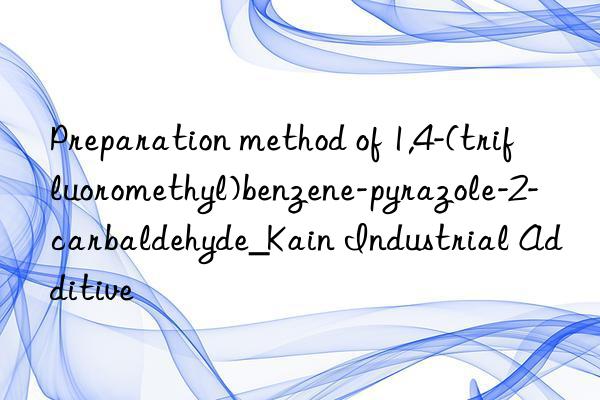
Background and overview[1]
1,4-(Trifluoromethyl)benzene-pyrazole-2-carbaldehyde can be used as an intermediate for pharmaceutical organic synthesis. If 1,4-(trifluoromethyl)benzene-pyrazole-2-carbaldehyde is inhaled, move the patient to fresh air; if skin contact occurs, remove contaminated clothing and wash the skin thoroughly with soap and water. If you feel any discomfort, seek medical attention; if contact with eyes occurs, separate eyelids, rinse with running water or saline, and seek medical attention immediately; if ingested, rinse mouth immediately, do not induce vomiting, and seek medical attention immediately.
Preparation[1]
1,4-(Trifluoromethyl)benzene-pyrazole-2-carbaldehyde can be used as a pharmaceutical synthesis intermediate, for example, it can be used to prepare N-benzyl [1-(4-trifluoromethylphenyl) Pyrazol-2-yl]methanamine, the specific steps are as follows: a mixture of 2-(4-trifluoromethylphenyl)-2-pyrazolecarbaldehyde (800mg) and benzylamine (466mg) in methanol (35ml) Stir at room temperature for 30 minutes. To the mixture was added portionwise a solution of sodium cyanoborohydride (275 mg) in acetic acid (4 ml) at room temperature, and the mixture was stirred at room temperature for 4.5 hours. The methanol was distilled off and the residue was extracted with chloroform. The extract was washed with water and saturated aqueous sodium bicarbonate solution and dried. The solvent was evaporated and the residue was chromatographed on silica gel. Elution with a mixture of ethyl acetate and n-hexane (1:6) gave N-benzyl[1-(4-trifluoromethylphenyl)pyrazol-2-yl]methanamine (675 mg). 1H-NMR (CDCl3) δ: 3.70 (2H, s), 3.76 (2H, s), 6.25 (2H, d, J=2.5Hz), 6.80 (1H, t, J=2.5Hz), 7.20-7.46 ( 9H, m) MS: 295 (M+-1)
Main reference materials
[1] JPH07118229 Preparation of pyrrole derivatives as ACAT inhibitors

 微信扫一扫打赏
微信扫一扫打赏

